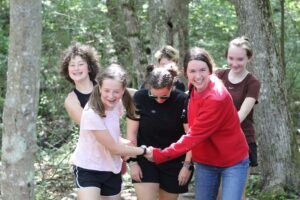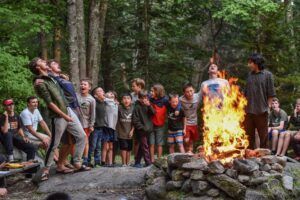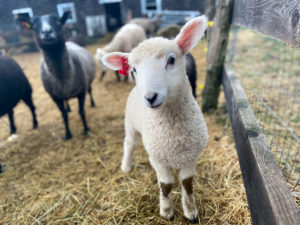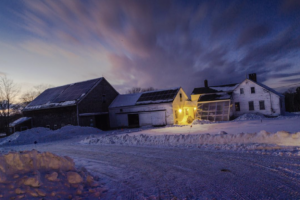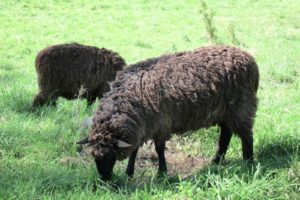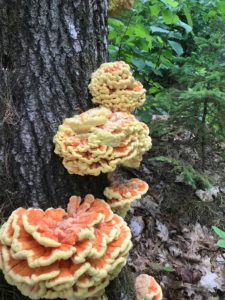What to do on a blisteringly hot day like this one? Here’s a few snapshots from our day on the farm:
Cut hay.
Every year about this time – give or take a week or maybe two – we cut our first hay of the season. Sitting on the horsedrawn mower behind the most magnificent beast I know, I wax poetic in my head about this process as it unfolds, feeling wholly undeserving in the face of something so markedly beautiful. The mower bar snick-snicks to my right, hay falling in perfect lines, and all is glorious in the world (until Sal gets tired and stops on her own accord and the hay gets tangled and I get crotchety). Yesterday, Sal and I cut Oak Flats – our highest and driest hay field – and today we tackled North Pasture. In all, she cut the totality of the hay that will feed her next winter with some to spare for the other livestock.
This is my favorite farm cycle: Sal cuts hay. Sal eats hay. Sal makes manure. This fall, we’ll spread that manure on the hay ground and next year – wait for it – she’ll cut hay from that same spot again. According to Maine Lingo by John Gould, a horse used to be referred to as a “hayburner” in the way that a modern car is called a “gas guzzler.” So apt.
I lack the words to describe the sheer sacredness of the haying process. In the heat of yesterday, we paused for a long rest in the shade while Hilary sponge-bathed cool water onto Sal’s back and I rocked forward-back-forward-back on the mower as it moved with her heavy breathing. Rest and sponge bath complete, we moved back into the work.

Drink more switchel.
Between all the members of the farm crew, we drank 21 water bottles (of varying sizes) of water today and hydrated with two-plus gallons of switchel. Thank all goodness for Bill, our Kitchen Manager, who sees a weather forecast like the one we had today and starts mixing us up a batch of haymaker’s punch. Happy switchel season to all!
Go for a swim.
Most of the farm crew headed in the direction of water after chores (some to the Chewonki waterfront, others to a local pond), but the cows beat us to it. Pastured around the farm pond today, the animals enjoyed the shade of the willow trees of the northern edge, and two cows – Greta and Petey – went so far as to go for a dip.

Top it all off with a Farm Seminar.
Tonight was our second-ever Farm Seminar. Acknowledging a desire to find more opportunities to share information and develop professionally within our farm crew, Lisa had the idea this spring that we should start hosting monthly seminars for each other. Last month, Lisa brought some tools from a recent workshop she’d attended about on-farm relational systems so that we could explore how we might best work together as a crew. This month, Hilary walked us through her crop planning process, which she wrote a bit about back in 2015, for those who are interested in learning more. This seminar sat starkly in the intersection of the traditional and progressive farming that we engage with here: eight of us (the year-round farm crew, our summer workers, the new Boys Camp Farm Activity Coordinator, and a camp staff member who came to visit the baby cow but stayed when he heard that farm-themed spreadsheets were about to be displayed) sat on buckets and crates in the (soon-to-be-full-of-hay) loft of our 150-year-old barn as Hilary meticulously talked through her process with the aid of a PowerPoint projected onto a sheet hanging on the wall. In small groups, we engaged in a microcosm of the planning process with some imaginary assigned outcomes: “Plan a garden that produces 50 pounds of cucumbers, 75 heads of lettuce, and up to 50 pounds of carrots weekly for eight weeks of the summer.” I’m not too proud to say that my group was stumped. Given seeding rates, average yields, and seasonal fluctuations in growth rates, how do you ensure that sufficient amounts of produce are available at very specific times? The whole of the evening added a new layer of appreciation for the sheer wizardry of the work that goes into planning this diversified farm.
So that’s it: a small bit of the work and play that we engaged in today. Tomorrow’s set to be another hot one. Our first crop of hay should be in the loft by afternoon chores, and we’ll finish weeding East Main garden by lunch if all goes well.
